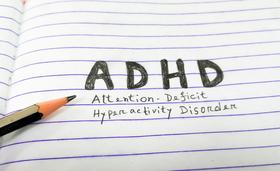Serving 387 students in grades Kindergarten-5, Acacia Magnet School For Enriched Learning ranks in the top 30% of all schools in California for overall test scores (math proficiency is top 50%, and reading proficiency is top 50%).
The percentage of students achieving proficiency in math is 45-49% (which is higher than the California state average of 40%). The percentage of students achieving proficiency in reading/language arts is 55-59% (which is higher than the California state average of 51%).
The student:teacher ratio of 18:1 is lower than the California state level of 21:1.
Minority enrollment is 59% of the student body (majority Hispanic), which is lower than the California state average of 79% (majority Hispanic).
Quick Stats (2024)
- Grades: Kindergarten-5
- Enrollment: 387 students
- Student:Teacher Ratio: 18:1
- Minority Enrollment: 59%
- Math Proficiency: 45-49%
- Reading Proficiency: 55-59%
- Source: National Center for Education Statistics (NCES), CA Dept. of Education
Top Rankings
Acacia Magnet School For Enriched Learning ranks among the top 20% of public schools in California for:
Category
Attribute
Student Attention
School Overview
Acacia Magnet School For Enriched Learning's student population of 387 students has grown by 6% over five school years.
The teacher population of 21 teachers has grown by 10% over five school years.
Grades Offered
Grades Kindergarten-5
Total Students
387 students

Gender %

Total Classroom Teachers
21 teachers

Students by Grade

School Rankings
The diversity score of Acacia Magnet School For Enriched Learning is 0.58, which is less than the diversity score at state average of 0.63. The school's diversity has stayed relatively flat over five school years.
Math Test Scores (% Proficient)
(18-19)45-49%
40%

Reading/Language Arts Test Scores (% Proficient)
(18-19)55-59%
51%

Student : Teacher Ratio
18:1
21:1

American Indian
n/a
1%

Asian
4%
12%

Hispanic
50%
56%

Black
1%
5%

White
41%
21%

Hawaiian
n/a
n/a
Two or more races
4%
5%

All Ethnic Groups



Eligible for Free Lunch
36%
51%

Eligible for Reduced Lunch
1%
7%

School Statewide Testing
School District Name
Source: National Center for Education Statistics (NCES), CA Dept. of Education
Frequently Asked Questions
What schools are Acacia Magnet School For Enriched Learning often compared to?
Acacia Magnet School For Enriched Learningis often viewed alongside schools like Aspen Elementary School by visitors of our site.
What percent of students have achieved state testing proficiency in math and reading?
45-49% of students have achieved math proficiency (compared to the 40% CA state average), while 55-59% of students have achieved reading proficiency (compared to the 51% CA state average).
How many students attend Acacia Magnet School For Enriched Learning?
387 students attend Acacia Magnet School For Enriched Learning.
What is the racial composition of the student body?
50% of Acacia Magnet School For Enriched Learning students are Hispanic, 41% of students are White, 4% of students are Asian, 4% of students are Two or more races, and 1% of students are Black.
What is the student:teacher ratio of Acacia Magnet School For Enriched Learning?
Acacia Magnet School For Enriched Learning has a student ration of 18:1, which is lower than the California state average of 21:1.
What grades does Acacia Magnet School For Enriched Learning offer ?
Acacia Magnet School For Enriched Learning offers enrollment in grades Kindergarten-5
What school district is Acacia Magnet School For Enriched Learning part of?
Acacia Magnet School For Enriched Learning is part of Conejo Valley Unified School District.
School Reviews
Review Acacia Magnet School For Enriched Learning. Reviews should be a few sentences in length. Please include any comments on:
- Quality of academic programs, teachers, and facilities
- Availability of music, art, sports and other extracurricular activities
Recent Articles

How “Collaborative Reasoning” Could Be the Next Public School Trend
Collaborative reasoning, which encourages independent critical thinking, is growing in popularity amongst public schools. Learn about collaborative reasoning and how it benefits public school classrooms.

Understanding ADHD in Children: Signs, Diagnosis, and Support Strategies
This comprehensive article explores the complex nature of attention-deficit/hyperactivity disorder (ADHD) in children, providing insights into its symptoms, diagnosis process, and effective support strategies. From recognizing early signs to navigating the diagnostic journey, parents will gain valuable knowledge to help their child thrive. Expert insights, real-life examples, and practical tips empower readers to create a supportive environment that meets the unique needs of children with ADHD.

March 04, 2024
Teaching in Contemporary TimesWe explore why individuals choose teaching, illuminating intrinsic motivations, the influence of role models, the pursuit of lifelong learning, and the aspiration to impact society.





